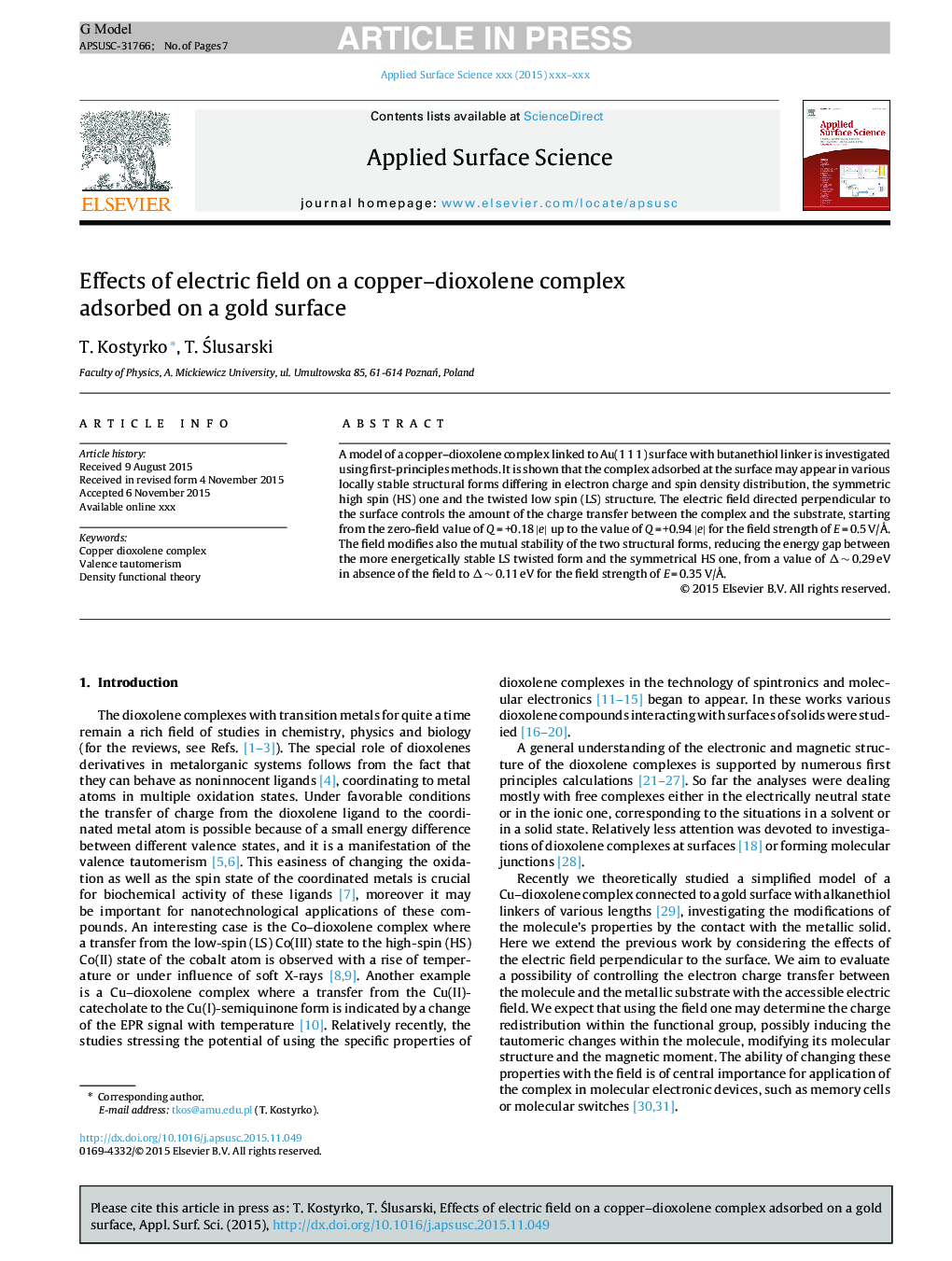| Article ID | Journal | Published Year | Pages | File Type |
|---|---|---|---|---|
| 5352835 | Applied Surface Science | 2016 | 7 Pages |
Abstract
A model of a copper-dioxolene complex linked to Au(1Â 1Â 1) surface with butanethiol linker is investigated using first-principles methods. It is shown that the complex adsorbed at the surface may appear in various locally stable structural forms differing in electron charge and spin density distribution, the symmetric high spin (HS) one and the twisted low spin (LS) structure. The electric field directed perpendicular to the surface controls the amount of the charge transfer between the complex and the substrate, starting from the zero-field value of QÂ =Â +0.18Â |e| up to the value of QÂ =Â +0.94Â |e| for the field strength of EÂ =Â 0.5Â V/Ã
. The field modifies also the mutual stability of the two structural forms, reducing the energy gap between the more energetically stable LS twisted form and the symmetrical HS one, from a value of Πâ¼Â 0.29 eV in absence of the field to Πâ¼Â 0.11 eV for the field strength of E = 0.35 V/Ã
.
Related Topics
Physical Sciences and Engineering
Chemistry
Physical and Theoretical Chemistry
Authors
T. Kostyrko, T. Ålusarski,
